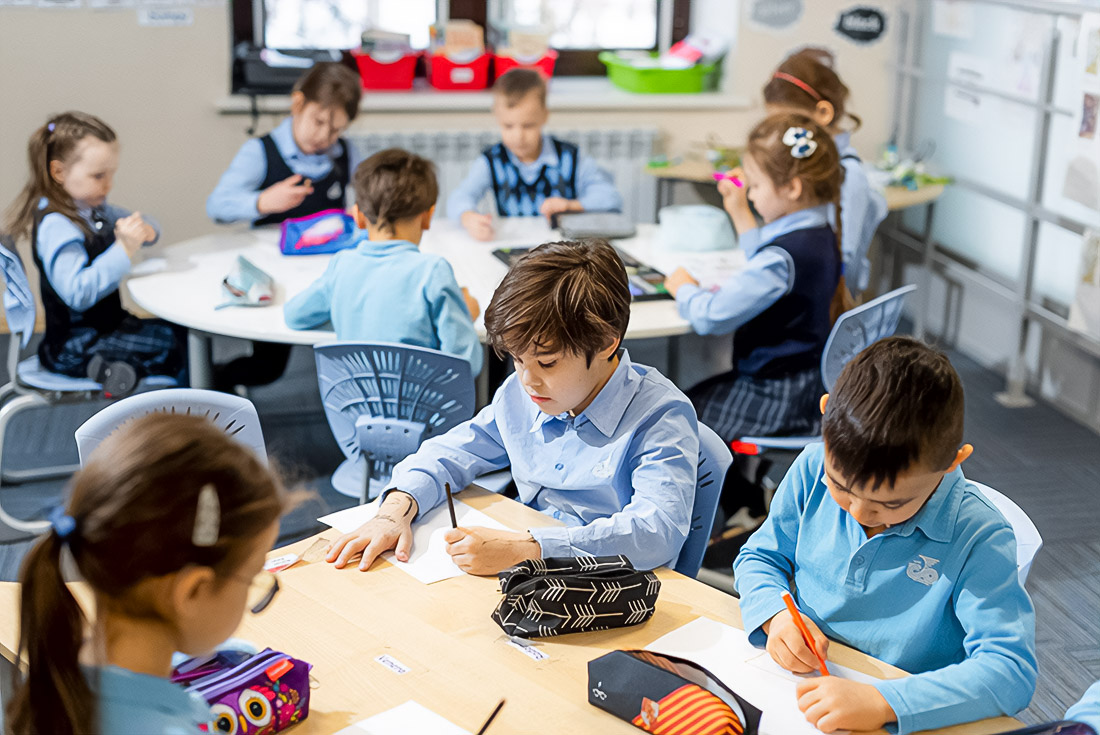Computational thinking is not just method programming; this fundamental process solves tasks, which includes formulating problems in such a way that solutions can be executed by humans, computers, or even robots. The given approach covers skills analysis, decomposition, abstraction, and algorithmic thinking. For children in preschool and junior school age, mastering these competencies can guarantee their successful future. According to statistics, early development of computational thinking contributes to increased academic performance by 20-30% in such disciplines as mathematics and science. Learn more about American curriculum for kindergartens, which promotes the early development of such skills.
Numbers and Facts: How Early Development Contributes Successful Learning
 Early development computational thinking helps children become critical and logical thinkers. Children begin to effectively analyze information, find patterns, and develop strategies for solving problems. Researches show that 90% of children who mastered skills in computational thinking at an early age demonstrate high results in tests on cognitive abilities. These skills are fundamental for many areas, such as mathematics, science, and even study languages. In the modern world, where technologies have become an integral part of our lives, new requirements are imposed on education, and understanding the basics of computational thinking becomes an important tool for successful adaptation to a constantly changing environment.
Early development computational thinking helps children become critical and logical thinkers. Children begin to effectively analyze information, find patterns, and develop strategies for solving problems. Researches show that 90% of children who mastered skills in computational thinking at an early age demonstrate high results in tests on cognitive abilities. These skills are fundamental for many areas, such as mathematics, science, and even study languages. In the modern world, where technologies have become an integral part of our lives, new requirements are imposed on education, and understanding the basics of computational thinking becomes an important tool for successful adaptation to a constantly changing environment.
Diversity Methods: Approaches to Learning Computational Thinking
 Many methods and approaches are effectively used for learning computational thinking in preschool and junior classes. One of the popular approaches — is this usage of game and interactive learning methods, which allow children to actively engage in the process, simultaneously developing necessary skills. Researches, such as on ResearchGate, show effectiveness these methods.
Many methods and approaches are effectively used for learning computational thinking in preschool and junior classes. One of the popular approaches — is this usage of game and interactive learning methods, which allow children to actively engage in the process, simultaneously developing necessary skills. Researches, such as on ResearchGate, show effectiveness these methods.
- Game Methods: Usage games with elements solving problems helps children develop algorithmic thinking. For example, games with puzzles and riddles stimulate children to think about sequences of actions and possible results. World practice shows that gamification learning increases the motivation of children by 50%.
- Robotics in Learning: Simple robotic sets, such as LEGO Education or Bee-Bot, help children understand basic programming and algorithmic thinking. Children can program the robots to execute simple tasks, which contributes to understanding cause-effect relationships.
- Project Learning: Participation in projects requiring children to develop solutions to specific problems stimulates logic and creative thinking. For example, the creation of simple mechanisms or development scenarios for theatrical performances are examples of such projects.
Integration Computational Thinking in Academic Disciplines
 Computational thinking can be successfully integrated into various academic disciplines, such as mathematics, science, and languages. Its application goes far beyond computer science. More about integration can be read on Ministry Education UAE.
Computational thinking can be successfully integrated into various academic disciplines, such as mathematics, science, and languages. Its application goes far beyond computer science. More about integration can be read on Ministry Education UAE.
- Mathematics: Solving tasks with sequences and logical operations builds on computational thinking. For example, studying symmetry and patterns can be related to understanding algorithms.
- Science: Computational thinking helps in understanding processes modeling and simulation, such as studying ecosystems.
- Language Disciplines: Develops skills in writing and reading through the creation of interactive stories and programs.
Tools and Resources for Effective Learning
Many modern tools and resources are actively applied to learning computational thinking for children. They provide endless possibilities for creative approaches and learning:
- ScratchJr: This application allows children of junior age to create simple interactive stories and games, developing skills in programming. The program has already taught more than 10 million children worldwide.
- LEGO Education: Sets develop engineering thinking and understanding algorithms, helping children create and program simple mechanisms.
- Bee-Bot: Mini-robot, which can be programmed to execute simple tasks, teaches basic programming and cause-effect relationships.
- Code.org: Online platform offers courses and lessons on basic programming and computational thinking for children of all ages. Already, more than 100 million students have registered on the platform.
Achievements and Challenges Implementation Computational Thinking
Implementation of computational thinking in the educational system brings many advantages, but it also faces certain challenges. On Case study can be found more detailed information about such challenges.
- Advantages: Children develop cognitive skills, such as logical thinking, analysis, and solving problems. Integration of computational thinking can increase their academic performance and prepare them for future career opportunities.
- Challenges: Educators must be prepared and confident in using new technologies and methods. Providing access to quality resources and tools can require significant investments.
Successful Case-Scenarios and Initiatives
Exist examples of successful programs and initiatives demonstrating positive results in learning computational thinking. For example:
- “Hour of Code”: Program from Code.org attracted millions of children worldwide, offering interactive lessons programming.
- “Computing at School” in the United Kingdom: Program actively promotes the integration of computational thinking in national academic programs and provides teachers with necessary resources and support.
Impact Computational Thinking on Future Generations
Skills computational thinking exert a significant impact on the academic and career successes of children. In a world where technologies play a key role, understanding basic programming and algorithmic thinking becomes an important competitive advantage. According to estimates, specialists, children who mastered given skills are 30% more adaptive to new technologies. Besides, skills in computational thinking develop critical thinking and creativity, which is useful in any professional area. Regardless of the chosen career, these competencies help successfully solve complex tasks and make informed decisions.

Snowboarder, feminist, guitarist, Bauhaus fan and fullstack designer. Making at the junction of modernism and elegance to give life to your brand. I’m a designer and this is my work.
